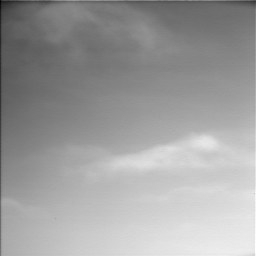Pressure is above the normal (636Pa according to wikipedia) at 743hPa (that's hectopascal which is equivalent to 100Pa; terrestrial air pressure is 1013.25hPa). That's an average for the whole day mind you.
They're also supposed to produce daily average relative humidity but so far they haven't. This may have something to do with the damage the instrument reportedly suffered (see this post). Relative humidity is simply put the amount of air that is saturated with water vapour. On Earth it is usually measured using 2 thermometers. One is hung out dry the other is hung out while being soaked with moisture (usually with muslin). This is a basic hygrometer. The moisture evaporates in to the air, cooling the 'wet bulb'. The 'dry bulb' will obviously register a higher temperature compared to the wet bulb. This difference will decrease in areas with a lot of moisture in the atmosphere. A meteorologist will check the difference against a table that gives him/her the relative humidity in percentage. Deserts will have a very low percentage (which is why when you sweat in Dubai in the breeze, you'll feel cool). In a tropical forest, the percentage is higher and that 'humidity' gives you a devastating heat wave as there is no where for your sweat to go to cool you. Yikes!
Winds continue to blow from the east at 2m/s. The winds can hit higher speeds, atleast enough to start global dust storm events.
These past few sols consisted of remote sensing to spot clouds above the rover. Clouds at the equatorials are usually of the wispy types called 'cirrus' clouds consisting of water ice crystals.
| Cirrus clouds on Earth (Commons) |
You shouldn't expect anything more than that. I don't know why exactly (comments anyone?) but most of the action in terms of clouds is at the polar regions (presumably because most of the water vapour migrates there).
You can see what I mean by what the Phoenix space craft (which landed in 2008 at Vastitas Borealis near the north pole) captured in one of its periodic cloud spotting activities shown below. Simply awesome!
 |
| Clouds by Phoenix (Commons) |
No comments:
Post a Comment